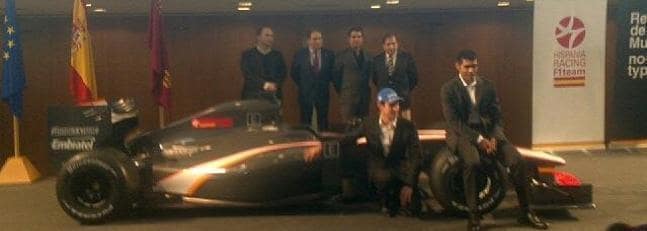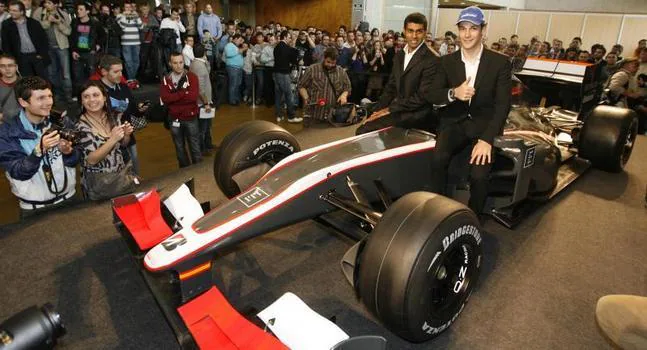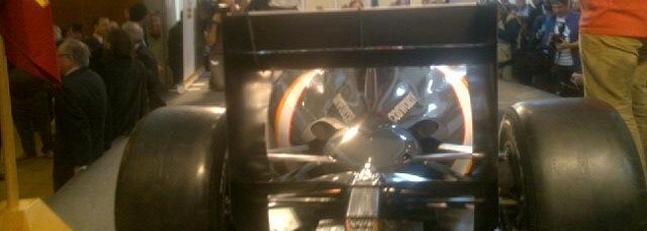Meh, how can we ever have any interesting innovation anymore if other teams cry to the FIA every time they miss a trick? :rolleyes:
[url="Massa’s helmet-cam lap of Jerez"]Massa’s helmet-cam lap of Jerez [/url]
Maybe cause now it's not anymore engineers missing clever innovations. But more lawyers interpreting differently, bending words and finding holes in overcomplicated rules.
Sucks when another team shows up with something you thought of but didn't implement only cause your interpretation of the rule says its illegal.
LOL
The thing about rules is that there can only be ONE interpretation, not two, three, or more. That's the whole point of having rules. Seeking clarification is good. Just clenching one's teeth and doing whatever, is not.
so define what a hole is and what a hole isnt coz they classed it as a "edge", even tho theres a big wide gap there (double diffuser vs single)
Disagree. If there was only one interpretation every car would look identical given the same rules (which we know is not the case).
Woot ???
So If I give a rule every car has to have 4 tires (which resolves to clearly one interpretation), would than every car look the same ?
One of the most stupid comments I ever read.
If the rules just say "your car must have 4 tyres" then there are multiple interpretations of that. You could put two at the front and two at the back or three at the front and one at the back etc. Those are different interpretations of the same rule. As BreadC points out there were different interpretations last year of the rules concerning the diffuser.
So now USF1 has been wiped out, but Stefan GP has been denied its place...at least Campos Meta is going ahead, even if its with other management and other name.
In the end, we get 6 new mobile chicanes in the form of the 3 new teams that made it and the same teams at the front as always, gonna be a good season I think
In the end, we get 6 new mobile chicanes in the form of the 3 new teams that made it and the same teams at the front as always, gonna be a good season I think

The rule doesn't say where the tyres have to be, this not part of the rule.
It just says 4 tyres.
And the one and only intepretation of that is put 4 tyres on that car everything else is up to you.
There is no rule that covers every aspect of a design as it would make no sense. So even if a rule has only one interpretation, there are most probably different results in design.
We're arguing the different definitions of the word interpretation. The first definition (and the one you're talking about) means "what does this text say?". So, when you read a rule that says "Your car must have 4 tyres" means that whatever you do you must put 4 tyres on your car. That is the only interpretation of that rule in this sense. The second definition (and the one I'm talking about) means "what I have decided to do given a specification". If one designer makes a car with 2 tyres at the front and 2 at the back that is his interpretation of the rule. If another designer makes a car with 3 tyres at the front and 1 at the back that is his interpretation of the rule. Both interpretations are legal given the very basic rule.
Definition of interpretation.
Article on interpretation in F1.
You're right. My view was one sided. Sorry for the harsh comment.
I was seeing an interpretation of a rule more as a type of bending the rule.
Imho things that are not covered by rule (e.g. where to put the tyres) are freedom of design and not a sign of a bad formed rule.
No problem. I think we had some language problems and I wasn't as clear as I could have been in my first post. I appreciate the apology.
Hmmm... my science and engineering brain agrees with this, but my lawyer brain does not. On hindsight, I should have used the word, "meaning", rather than "interpretation".
In the legal profession (and the judiciary, for that matter), rules are always interpreted literally as the first and most authoritative interpretation. But if the literal interpretation reveals ambiguities within the rule, then the intent of the rules are examined to find the true meaning. I use the legal profession as the model here, since even in the FIA (and many other sporting organisations), disputes about rules ultimately become legal issues.
In the case of the FIA and its technical regulations, this means that the technical regulations should be interpreted literally first and foremost. But ambiguities in the rules need to be dealt with in one of two ways: either the team guesses what the true meaning of the rules are, or they can consult the FIA for clarification of the rules. Generally, I think the team engineers and their advisors would make educated guesses about the rules, by looking at past precedents, notes made during meetings when the rules are written up, etc. When two or more teams find that the other(s) have arrived at different meanings, then it is only natural and fair that the FIA is consulted: "do the ambiguities mean we can do whatever we want, or do you intend that it means something more?"
that line wasnt originally posted by me so dont know where u got that from

no u.

Looks pretty good.
More pics:


More pics:


nice, reminds me of the spanish le mans car, forgot the name...
this one, Epsilon Euskadi?

yeah, its similar, who knows if the some of the Designers are the same
Yeah thats the one.
Finally, everything is clear. No more USF1 or other crap.  *waits for Bahrein first practice session*
*waits for Bahrein first practice session*
 *waits for Bahrein first practice session*
*waits for Bahrein first practice session*Someone shave the dude's eyebrown please.
Formula One Season 2010
(1980 posts, started )
FGED GREDG RDFGDR GSFDG
